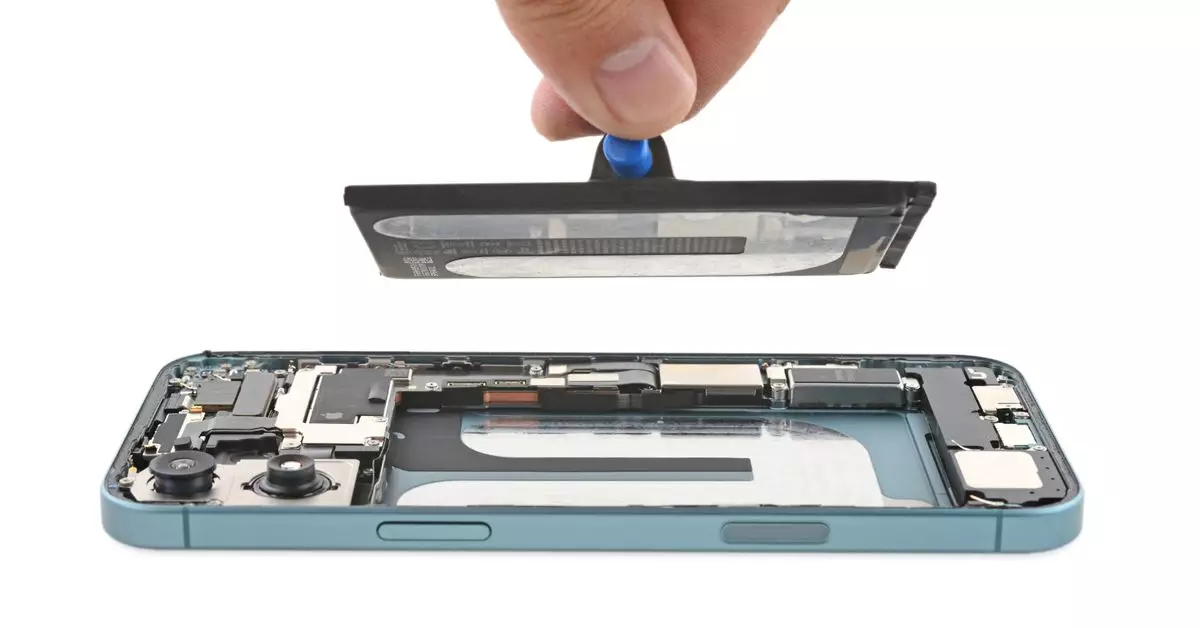The recent unveiling of the iPhone 16 series highlights a significant shift in Apple’s approach not only to device functionality but also to repairability. With the company’s commitment to making its devices easier to repair, the integration of electrically debondable adhesive represents a groundbreaking change in smartphone design. This article delves into the implications of this innovation, shedding light on how it alters the landscape of device maintenance and sustainability.
A Closer Look at the Disassembly Process
As soon as the iPhone 16 reached the market, tech enthusiasts from iFixit wasted no time in dissecting the device to explore its internal architecture. Historically, one of the challenges with smartphones has been the use of strong adhesives that make repairs cumbersome and often damaging to the device. However, the iPhone 16 breaks this mold with its new electric adhesion technique. During the disassembly process, it became evident that the camera control functions as a tactile button and the device houses a sophisticated thermal management system aimed at keeping the A18 chip’s Neural Engine cool.
The highlight, however, is the battery enclosure. Unlike previous models—which relied on traditional adhesives that required significant effort to remove—the introduction of an electrically activated adhesive system paves the way for a user-friendly repair experience. This strategic enhancement not only simplifies the battery replacement process but may also enhance the longevity of the device itself by making repairs easier.
The novel approach of electrically debonding batteries involves a straightforward but effective process. Technicians can disconnect the battery from the motherboard and then apply electric current to dissolve the adhesive. Specifically, a 9-volt battery applied for 90 seconds can gently release the tightly bonded battery, making removal exceptionally straightforward. The convenience of using gravity to assist in removal underscores the advancement in adhesive technology, enabling a quicker and more efficient servicing experience.
Moreover, Apple has been thoughtful about how this technology might perform over time. While the initial ease of release is a boon, the manufacturer has acknowledged that the effectiveness of this method may decrease with prolonged use, suggesting a need for regular maintenance and perhaps encouraging consumers to seek professional help for battery replacements as the device ages.
For consumers, the implications of this design are manifold. Easier repairs can lead to heightened user satisfaction, as individuals will no longer need to resign themselves to the frustrating experience of encountering a dead battery without an easy fix. This shift toward repairability also coincides with a broader cultural movement advocating for sustainability in technology.
Reduced e-waste is a significant benefit, as users can keep their devices functioning longer without being forced into complete replacements due to simple battery issues. This is a step toward a more sustainable future within the tech industry, whereby manufacturers are increasingly held accountable for the lifecycle of their products.
The iPhone 16 lineup exemplifies Apple’s intention to embrace repairability, aligning itself with a growing global demand for sustainable practices in technology. By innovating its adhesive technologies and prioritizing user experience, Apple is not only cultivating consumer goodwill but is also setting a new industry standard for smartphone design. Whether or not other manufacturers will follow suit remains to be seen, but one thing is clear: the future of smartphones might just be a little easier to handle.


Leave a Reply